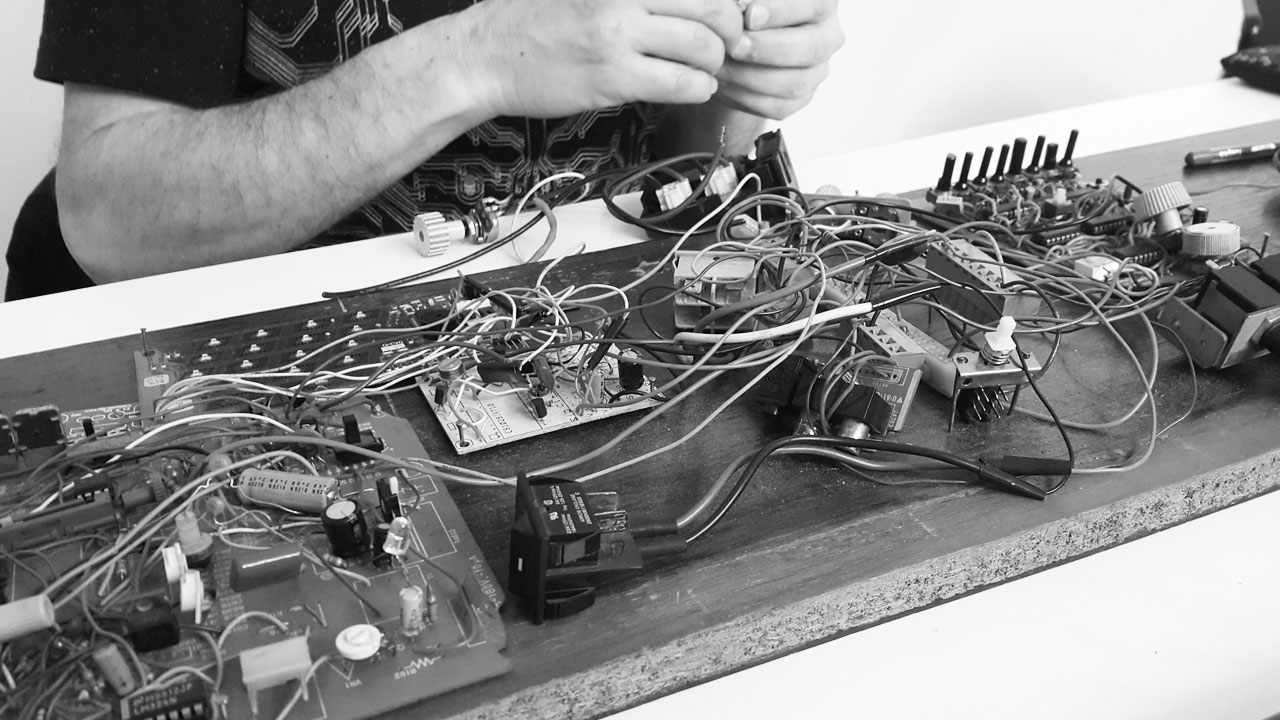THE TRONEITOR
Built entirely out of electronic waste collected from the streets of
Buenos Aires, the TRoneitor is an instrument that presents the
structure of a modular synthesizer, its modules being quite peculiar.
Its architecture is very simple, and it is built with only 10 basic
integrated circuits and discrete components.
The sounds are generated from the action of potentiometers and switches, and by harnessing the resistance of the human body to generate, in a tactile module developed from the printed circuit board of an electronic lock, tones of variable frequency in direct relation with finger pressure and the amount of hand surface supported, different timbres, filtering and sound modulation.
A pseudo-random sequencer module generates rhythmic and melodic patterns that can function as ostinato or as a rhythmic base; in particular, this module is capable of producing irregular metric patterns and generating gradual transitions between pure rhythms with a preponderance of bass beats similar to drum kicks, and melodic sequences whose interval and key can be modified in real time with the slight twist of a potentiometer.
Finally, a third module that operates on the principles of a classic synthesizer, generates a variable frequency tone that can be modulated with an LFO, produces white noise, provides a couple of filters and a rudimentary AR envelope generator. The whole set is mounted on a wood that must have been the shelf of a small library and that was also collected from the street, as was the TRoneitor’s power supply.

The sounds are generated from the action of potentiometers and switches, and by harnessing the resistance of the human body to generate, in a tactile module developed from the printed circuit board of an electronic lock, tones of variable frequency in direct relation with finger pressure and the amount of hand surface supported, different timbres, filtering and sound modulation.

A pseudo-random sequencer module generates rhythmic and melodic patterns that can function as ostinato or as a rhythmic base; in particular, this module is capable of producing irregular metric patterns and generating gradual transitions between pure rhythms with a preponderance of bass beats similar to drum kicks, and melodic sequences whose interval and key can be modified in real time with the slight twist of a potentiometer.
Finally, a third module that operates on the principles of a classic synthesizer, generates a variable frequency tone that can be modulated with an LFO, produces white noise, provides a couple of filters and a rudimentary AR envelope generator. The whole set is mounted on a wood that must have been the shelf of a small library and that was also collected from the street, as was the TRoneitor’s power supply.




